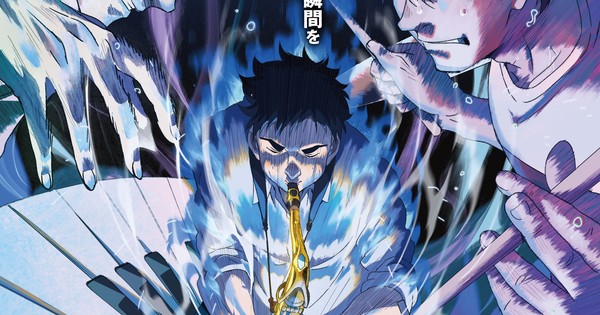Blue Giant is a relatively straightforward story about three young guys. Dai is that rare person with talent and drive—an innocent person who loves what he does and never lets anything get him down. Unfortunately, this also means he is a relatively static character with no real arc in the film. He’s simply a person who never wavers for even a moment when accomplishing his dreams.
Yukinori, on the other hand, is far less optimistic. He’s been in the jazz scene for years and has been honing his craft since he was four years old. He has little patience for those not on his level as he aims for the top. His different way of viewing the world could make him a decent foil for Dai, but his interactions with the third main character give him his arc for the film.
Shunji is your average college student inspired by Dai’s love of jazz when he loses his passion for soccer. With Dai and Yukinori lacking a drummer to keep the beat, he steps into the role—and is as terrible as you’d expect. This, of course, brings him into conflict with Yukinori. Yet, while Shunji has no natural talent, he grows with his constant hard work. And as the story goes on, the philosophical difference between the two becomes clear: Yukinori plays only to be the best, while Shunji plays simply for the joy of playing with his friends. The question becomes, which kind of player is better to have when it comes to music as emotionally charged as jazz?
Yet, even with this small helping of personal conflict, Blue Giant is a film with rather one-note characters and a predictable plot—especially when it comes to its melodramatic third-act twist. However, that’s somewhat forgivable. After all, the story is only a vehicle to allow the film to do what it actually wants to do: introduce people to jazz and revel in the music. This movie is filled with easily half-a-dozen jazz numbers. Each of these is a full-blown music video—complete with wonderfully surreal visuals to accompany the music. The film does everything it can to make jazz seem special—like the most passion-filled music genre.
However, while this film is a paradise for those who love jazz and those who discover it through watching, if you’re not a fan of jazz music, the film really does drag. All the flashing colors and blaring saxophones become nothing but visual and auditory noise after a while—especially when the film goes from one five-minute number right into another one.
And speaking of the visuals, their quality shifts dramatically—not only between the musical numbers and the standard story sections where you’d expect it to but constantly, from shot to shot. Sometimes the characters are fully CG; sometimes, they are highly detailed 2D, and sometimes low-quality 2D. Because of this, the film often seems to lack a cohesive visual style—and the sudden style changes can be jarring to the point that pulls you out of the film.
All in all, Blue Giant is one of those films you’ll either fall in love with or be bored to tears by. The jazz numbers are undoubtedly artistic, with amazing musical storytelling and vibrant (if inconsistent) visuals. So if jazz is your thing, you will no doubt be enthralled by this film. However, if it isn’t, the film will drag on. With largely one-note characters and a predictable plot, you’ll likely become increasingly more annoyed each time the film grinds to a halt for yet another indulgent jazz riff. Or, to put it another way, this is a film that lives or dies based on how much you love jazz music.










